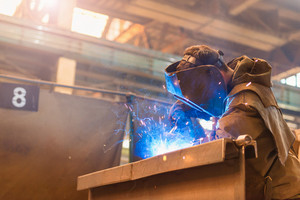Introduction to the Welding Industry
The welding industry plays a crucial role in the manufacturing and construction sectors, making it a significant component of the global economy. Welding is not just about joining metals; it’s about providing stability and durability to structures across various industries. As the demand for skilled welders grows, so does the business potential within this field.
Current studies highlight the expansive nature of the welding business, stretching beyond traditional realms. Innovations in technology and materials have revolutionized the industry, allowing for more efficient and precise techniques. This expansion creates numerous opportunities for businesses to diversify their services and offer cutting-edge solutions.
Despite its vast potential, the welding industry faces notable challenges, particularly concerning workforce shortages. As experienced welders retire, the demand for skilled professionals increases, posing a threat to operational continuity. Investing in education and training will be crucial to maintaining a steady flow of talent within the welding business.
Safety Considerations in Welding
Safety is paramount within the welding business, as it involves handling high-temperature equipment and materials. According to the Universal Technical Institute, spatter from welding can reach distances of up to 35 feet, presenting significant hazards such as burns and eye injuries to workers. Prioritizing safety protocols not only protects employees but also enhances business credibility.
Companies within the welding industry must implement comprehensive safety measures to mitigate risks. This includes providing personal protective equipment (PPE) such as welding helmets, gloves, flame-resistant clothing, and proper footwear. Regular safety drills and training ensure that employees are well-prepared to handle emergencies. Furthermore, businesses should invest in ventilation systems to reduce exposure to hazardous fumes and gases, which can lead to long-term health problems.
By fostering a culture of safety, businesses can ensure compliance with regulations and promote a responsible work environment. Employees who are well-trained in safety procedures are more likely to adhere to best practices, minimizing accidents and injuries. Investing in safety also improves productivity and reduces operational costs by lowering the chances of accidents and associated downtime. When workers feel safe, their efficiency and morale are likely to improve, benefiting the overall business. Therefore, addressing safety concerns should be a core focus for welding companies, as it is a critical component of long-term success and sustainability in the industry.
Future Workforce Challenges
The impending shortage of skilled welders in the United States is a pressing issue for the business. According to the American Welding Society, there was a shortfall of over 400,000 professionals by 2025, mainly due to the retirement of baby boomers. Addressing this gap will require strategic efforts in education and workforce development. According to the U.S. News, the American Welding Society states that due to baby boomers retiring from welding, 90,000 welding jobs will need to be filled each year between now and 2027.
To combat this shortage, businesses in the welding sector must invest in training programs and apprenticeships. These initiatives will prepare the next generation of welders and ensure a sustainable workforce for the future. By fostering partnerships with educational institutions, companies can help align training programs with industry needs. These partnerships can also help expose students to real-world welding projects, providing them with the hands-on experience that is crucial to their development.
Furthermore, businesses can retain existing talent by offering competitive wages and career development opportunities. As the demand for skilled welders rises, providing a clear path for advancement will be crucial. Companies can also offer specialized training programs to improve skills and increase employee satisfaction. By valuing their workforce and investing in their development, businesses can not only address the shortage but also enhance their reputation within the industry. Moreover, creating a culture that encourages innovation and growth can help attract younger generations to the welding trade, ensuring a continuous flow of skilled professionals into the field.





Be First to Comment